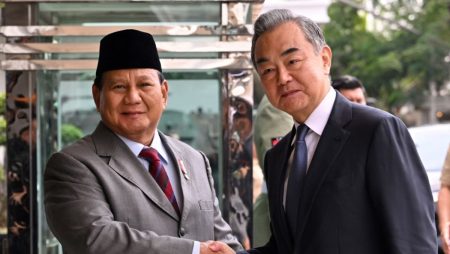Chinese nationals are an essential player in the Asian casino market, being the primary source of revenue for many casinos in the region. According to an industry consultant, Chinese nationals make up a significant portion of gaming revenue for casinos in Asia, highlighting their importance to the industry. This suggests that the preferences and spending habits of Chinese nationals play a crucial role in shaping the casino market in Asia, influencing the types of gaming options and amenities that casinos offer to attract and retain this lucrative customer segment.
The reliance on Chinese nationals as a key source of revenue underscores the significance of catering to their specific needs and preferences in the casino industry in Asia. Casinos in the region may tailor their offerings to appeal to this demographic, such as providing popular table games like baccarat and offering amenities that cater to Chinese tastes and preferences. By understanding and meeting the demands of Chinese nationals, casinos can effectively attract and retain this key market segment, ensuring a steady source of revenue and sustained growth in the competitive Asian casino market.
The dominance of Chinese nationals in the Asian casino market highlights the importance of understanding their gaming behaviors and preferences to craft effective marketing strategies. Casinos may leverage data analytics and market research to gain insights into the preferences and spending habits of Chinese players, enabling them to tailor their marketing efforts and promotional activities to effectively target this demographic. By recognizing the specific needs and interests of Chinese nationals, casinos can enhance their gaming experience and foster customer loyalty, ultimately driving revenue growth and profitability in the competitive Asian casino industry.
While Chinese nationals are a significant source of revenue for many casinos in Asia, industry players may also need to diversify their customer base to mitigate risks associated with overreliance on a single market segment. By expanding their reach to attract a diverse range of customers from different countries and regions, casinos can reduce their dependence on any one demographic and better hedge against economic uncertainties or geopolitical tensions that may impact specific markets. Diversification of customer base allows casinos to tap into new revenue streams and minimize risks associated with fluctuations in demand from a particular market segment.
In conclusion, Chinese nationals play a crucial role in driving revenue for casinos in Asia, with their preferences and spending habits shaping the industry and influencing the types of gaming options and amenities offered by casinos. To effectively cater to this key market segment, casinos may tailor their offerings and marketing strategies to appeal to the specific needs and interests of Chinese players. By leveraging data analytics and market research, casinos can gain insights into the gaming behaviors of Chinese nationals and craft targeted marketing campaigns to attract and retain this lucrative customer segment. Additionally, diversifying the customer base and expanding outreach to attract a diverse range of customers can help casinos mitigate risks associated with overreliance on a single market segment, ensuring sustained growth and profitability in the competitive Asian casino market.















